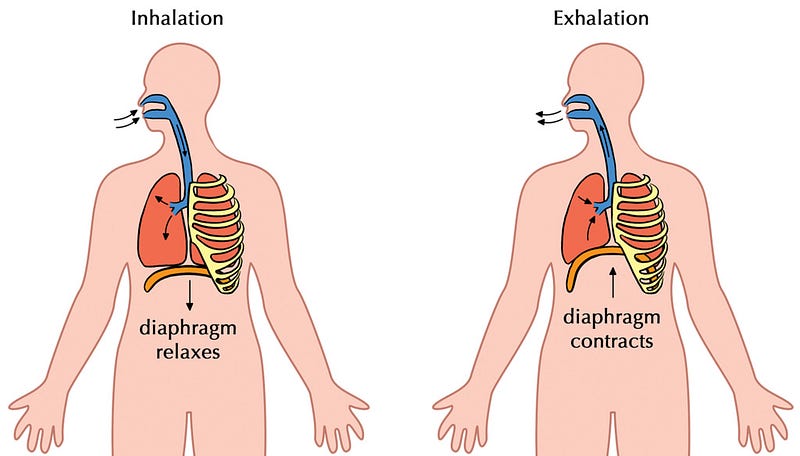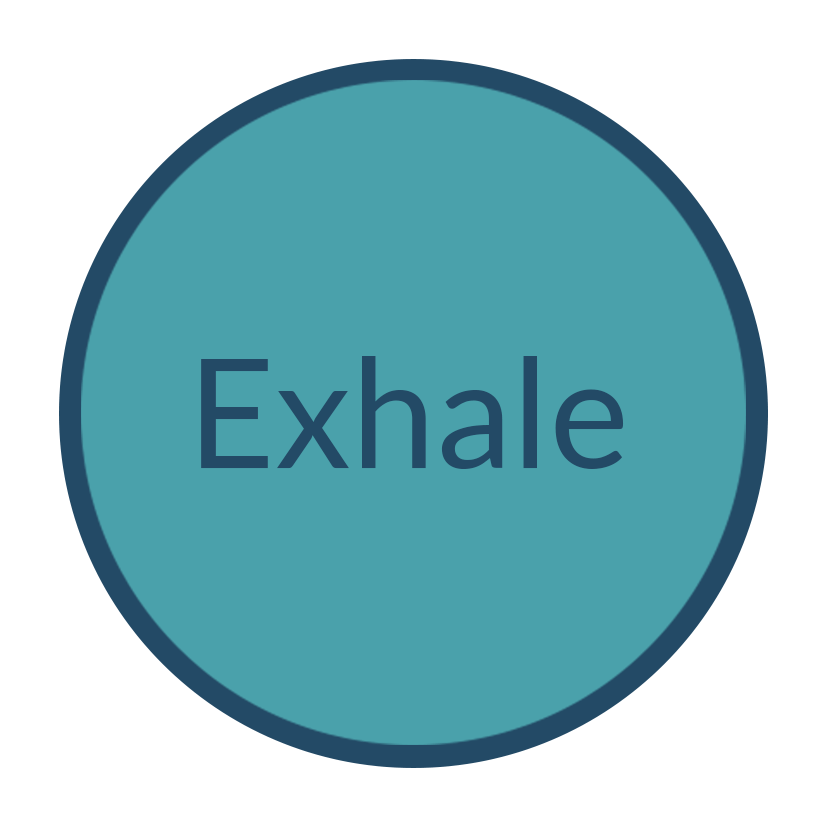5 Things To Help With Panic Attack Symptoms (And Why They Work)

Here Are 5 Ways To Get Through A Panic Attack, Based On Science.
Hardly anything is as frightening as a panic attack. Calling it ‘uncomfortable’ would not simply be an understatement; it would be wrong. A panic attack is so incredibly painful, it can feel like you're actually dying. When panic takes over, it seems like you’re losing control completely. However, there are a few things that you can do. None of them is a magical solution to an attack, but if you combine them, they can help you get through panic faster.
1. Immerse Your Face In Ice-Cold Water
Like an overheated engine, it works to cool down your nervous system with a mini-bath in ice-cold water. At least metaphorically.
Here’s the trick: You fill a sink or a bucket with cold water, adding in some ice cubes if you have them at hand. You then immerse your entire face in the water. Pay special attention to the area underneath your eyes and above your cheekbones. (This is the most sensitive part of your face.) Then hold your breath and come up whenever you need to breathe. Repeat this process a couple of times until you start to feel better.
Immersing your face in ice-cold water stimulates the mammalian diving reflex, an innate physiological response that we share with dolphins and seals. Over the course of evolution, mammals developed this reflex in order to survive with little or no oxygen under water. This reflex works through special nerves in the face which send a message to the vagus nerve, which in turn instructs your parasympathetic nervous system to calm down. It slows down heart rate considerabl and increases one’s chances of survival.
2. Practice And Apply Diaphragmatic Breathing
When you’re in panic mode, your breathing is shallow and fast. That’s an unfortunate combination because it’s like putting fuel into a fire. This kind of breathing makes panic attack symptoms worse. The main culprit is an imbalance of oxygen and carbohydrate in your blood which is only exacerbated by fast and shallow breathing.
The way you should be breathing involves the dome-shaped muscle that separates your lungs from your abdomen — the diaphragm. For your breathing to be most calming about 75% of the inhaling needs to be done by this muscle.

This releases pressure in the chest and as a result the heart has less work to do. Breathing automatically slows down and the chest and shoulder muscles are able to relax a bit.
In order to make sure that your diaphragm does most of your breathing, place one hand on your belly and the other on your chest. As you breathe in, your belly should expand while the hand on your chest should stay relatively still. To breathe out, tighten your stomach muscles and let them fall inward. Many people find it helpful to purse their lips as they do this.
For detailed instructions, you can also follow this video:
Trying this breathing technique for the first time when you’re in the middle of the panic attack symptoms is not the best idea. Instead, practice this for a few weeks and you’ll be well equipped to use diaphragmatic breathing to learn how to calm down when you start to get anxious.
When things get really intense, you can also breathe into a bag (this helps restore the CO2-O2 imbalance) or follow this well-tried breathing technique. It works by breathing in to the count of 7 and breathing out to the count of 11:

3. Do The 5-4-3-2-1 Grounding
One problem during panic attacks is that catastrophic thoughts and uncomfortable sensations feed on each other. They form a feedback loop where panic symptoms lead to ever more negative thoughts. We need a technique to intervene in this negative spiral and keep it from spiraling out of control. That’s what grounding is.
It helps us divert our attention away from the sensations of panic to the input of all our senses. This allows us to reconnect to the here and now and realize that you’re safe and not in danger. And most importantly, it distracts you from those scary thoughts and feelings.
Here’s how the 5–4–3–2–1 grounding technique works:
- You start off by finding 5 things that you can see. The idea is to look around in your environment and specifically name 5 things.
- Then you move on 5 things that you can hear. You will need to listen carefully to notice 5 different sounds around you.
- The next step is to find 5 things you can feel. Touch the things around you and pay attention to texture, temperature and moisture.
These three make up the first round of this exercise. In the next round, find 4 things each. Then 3, 2 and finally 1. By the end of the exercise, you might feel better.
4.Repeat “This Too Shall pass”
We just mentioned the role of catastrophic thoughts during a panic attack. These thoughts can range from “What if I’m going mad?” to “I’m going to die”. And it’s not surprising that this kind of thoughts contribute to panic.
Only logical to use a technique to turn them down. In fact, the best strategy that psychologists have come up with is to replace those catastrophic thoughts with positive, reassuring self-talk. The best idea is to find a mantra that you find helpful and silently repeat it to yourself. We suggest to use something like “This too shall pass” or “I’m not in danger, I am safe”.
Those words might not feel particularly believable at first but that’s exactly why you need to repeat them over and over again. Not just for a minute but until you’re calming down again.
5.Stop The Struggle
The final and probably most important piece of advice here is to practice a new attitude towards the panic symptoms. Instead of fighting the racing heart, the dizziness, the strange sensations or the breathing problems, the key to overcoming panic attacks is learning to accept all this. Your gut might tell you to resist but this will only make things worse. In fact, this inner struggle is the main reason why panic attacks keep coming back for some of us.
So the first thing to understand here is that panic itself is not dangerous. It’s simply an intense physiological over-reaction and it cannot harm you. You might forget this during a panic attack but that’s what you have your mantra for.
The second step is to accept your symptoms. When you notice your heart beating faster and you feel like a panic attack is coming up, don’t try to control it. Surrender to those sensations. It’s like mentally giving yourself permission to have a panic attack.
Think of it like this: You don’t like headaches but you don’t bang your head against the wall to make it go away. This kind of behavior would only make things worse. And the same is true for panic. Of course, it’s easy to write but seemingly impossible to do. Yet it can be done, and it can be practiced. Ideally you practice this when you only feel a few minor symptoms.
Another trick is to actively try to have a full-blown panic attack. It seems crazy but it can work. Because in order to increase your symptoms, you need to drop your resistance. You need to stop struggling against it and do the opposite. I
The science:
The mammalian diving reflex: https://www.ncbi.nlm.nih.gov/pubmed/16723802
Diaphragmatic breathing:General Principles and Empirically Supported Techniques of Cognitive Behavior Therapy
Proven and effective, cognitive-behavior therapy is the most widely taught psychotherapeutic technique. General…books.google.at
Why acceptance is important during panic attacks:The effects of acceptance versus suppression of emotion on subjective and psychophysiological…
The effects of acceptance versus suppression of emotion were examined in 60 patients with panic disorder. Prior to…www.sciencedirect.com
https://www.sciencedirect.com/science/article/pii/S0005791603000570
